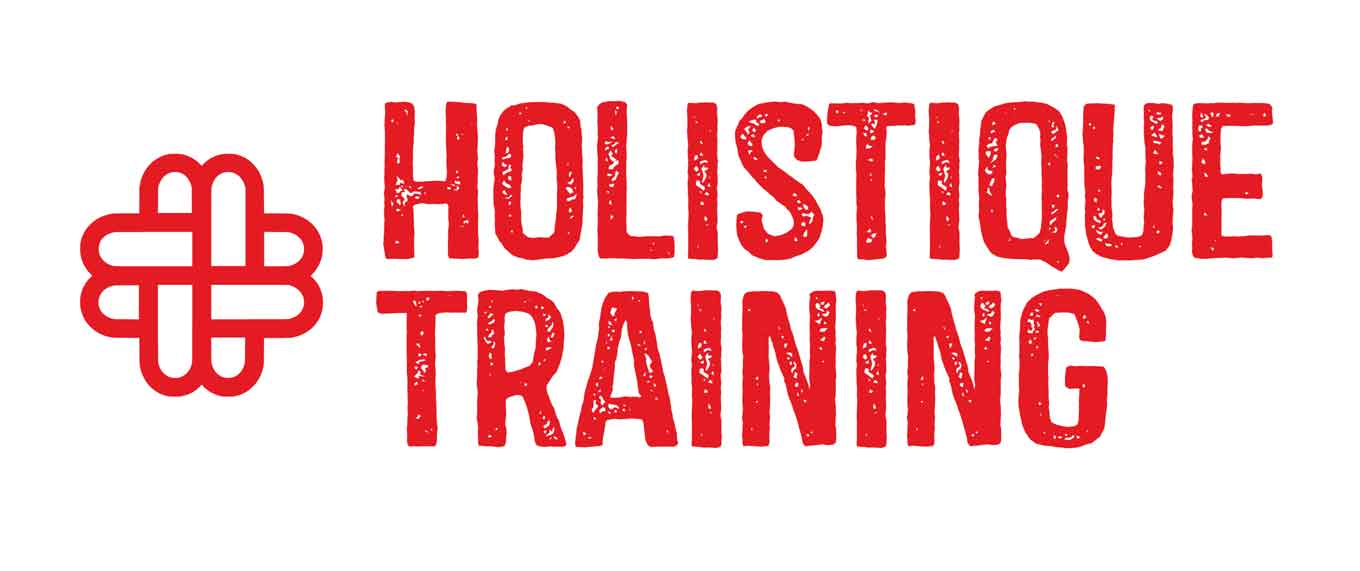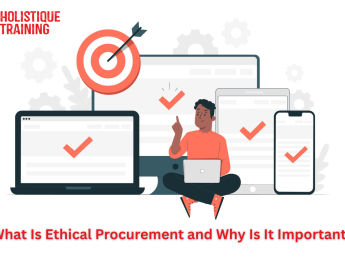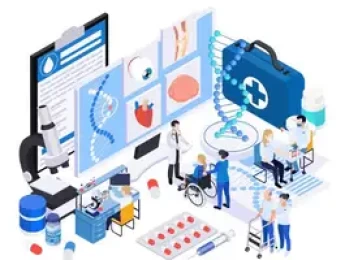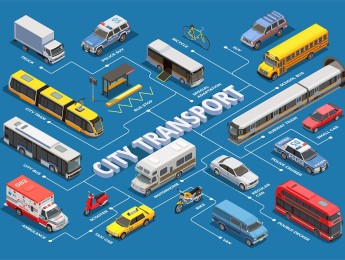- Table of Contents
- Introduction
- What Is ITSM and Why It Matters in 2025
- Key Features to Look for in an ITSM Tool
- Evaluation Criteria: How We Selected the Top Tools
- User Experience (UX):
- Ease of Implementation:
- Pricing and Plans:
- Customer Support:
- Security and Compliance:
- ITIL Compatibility:
- The 10 Best ITSM Tools in 2025
- 1. ServiceNow
- 2. BMC Helix ITSM
- 3. Freshservice (by Freshworks)
- 4. Jira Service Management
- 5. Ivanti Neurons for ITSM
- 6. ManageEngine ServiceDesk Plus
- 7. SysAid
- 8. Zendesk for ITSM
- 9. TOPdesk
- 10. HaloITSM
- Comparison Table: Features, Pricing, and Integrations
- Choosing the Right ITSM Tool for Your Business Needs
- Emerging Trends in ITSM for 2025 and Beyond
- AIOps Integration
- Self-Service Portals and Virtual Agents
- Experience-Driven ITSM
- Sustainability and Green ITSM
- Hyper-Automation and Low-Code Platforms
- Cybersecurity Integration
- Conclusion
Introduction
As organisations grow increasingly reliant on technology, the management of IT services has become central to ensuring business continuity and efficiency. From handling service requests and tracking incidents to automating workflows, IT Service Management (ITSM) tools play a critical role in aligning IT with business objectives. The ITSM landscape in 2025 continues to evolve rapidly, driven by automation, artificial intelligence, and a shift towards integrated digital ecosystems. In this article, we will discuss the top ITSM tools shaping the market in 2025, key features to consider, evaluation criteria, and tips to select the most suitable tool for your organisation.
What Is ITSM and Why It Matters in 2025
IT Service Management (ITSM) is the structured discipline that enables organisations to plan, deliver, operate, and control the IT services they provide to their internal teams and external customers. While traditionally associated with helpdesk operations and reactive problem-solving, ITSM in 2025 has evolved into a proactive and strategic component of enterprise success. It now plays a vital role in aligning IT initiatives with overarching business goals, particularly in a time marked by rapid technological disruption and decentralised workforces.
The shift to hybrid and remote work models, alongside the accelerated adoption of cloud platforms and AI technologies, has made seamless service delivery more critical than ever. ITSM frameworks ensure consistent performance across globally distributed teams, with minimal downtime and enhanced visibility. Moreover, the integration of AIOps (Artificial Intelligence for IT Operations) allows systems to predict and resolve incidents before they impact operations, while self-service portals empower employees to resolve issues independently, reducing strain on support teams.
In 2025, ITSM is no longer a reactive service layer—it is a strategic asset. By optimising resource allocation, improving compliance, and enabling data-driven decision-making, modern ITSM platforms help organisations stay competitive, agile, and customer-centric in an increasingly complex digital landscape.
Key Features to Look for in an ITSM Tool
Selecting the right ITSM solution requires a close look at features that support both technical efficiency and user satisfaction. As businesses scale and digital infrastructures grow more intricate, the following capabilities have become essential:
- Incident Management: A robust incident management system ensures that service disruptions are quickly logged, categorised, prioritised, and resolved. Advanced tools now use AI to route tickets intelligently and recommend resolutions, dramatically reducing downtime.
- Change Management: Today’s IT environments are constantly evolving. Effective change management allows for controlled updates to infrastructure, applications, or configurations without destabilising existing services. Top ITSM tools offer automated change approvals, risk assessment, and rollback mechanisms.
- Multi-channel Support: Employees expect to interact with IT through their preferred platforms—whether via email, live chat, mobile apps, or integrated support portals. Leading tools offer omnichannel capabilities and consolidate communications into a single dashboard for easier oversight.
- Reports and Analytics: Data is the backbone of modern ITSM. Dashboards showing KPIs such as ticket resolution time, customer satisfaction scores, and SLA adherence help managers identify bottlenecks and drive continuous improvement.
- Integration Capabilities: The best ITSM solutions do not operate in isolation. They seamlessly integrate with DevOps tools (like Jira), communication platforms (like Slack), cloud providers (like AWS), and CRM systems to create a connected IT ecosystem. This ensures efficient cross-departmental collaboration and real-time data synchronisation.
Ultimately, a tool that lacks one or more of these features may limit your ability to scale IT operations effectively or support emerging business models.
Evaluation Criteria: How We Selected the Top Tools
To fairly evaluate and compare ITSM tools in 2025, we developed a set of well-defined criteria based on current business needs, user expectations, and industry best practices. Here’s how each tool was assessed:
User Experience (UX):
We considered whether the platform offered a clean, intuitive interface accessible across devices, including mobile. Tools that allow agents to navigate quickly and reduce training times scored higher.
Ease of Implementation:
Whether a tool is cloud-based or on-premise, speed and simplicity of deployment are crucial. We also evaluated the availability of onboarding materials, technical documentation, and migration assistance.
Pricing and Plans:
Transparency and flexibility in pricing are important for all organisations, from start-ups to enterprises. We favoured tools that offer scalable plans, free trials, or pay-as-you-grow options.
Customer Support:
Reliable ITSM tools offer responsive, multilingual support with defined SLAs. We also reviewed the presence of community forums, knowledge bases, and AI-powered virtual assistants.
Security and Compliance:
With increasing regulation and cyber threats, features like role-based access control, GDPR compliance, and robust encryption protocols were prioritised in our evaluation.
ITIL Compatibility:
The IT Infrastructure Library (ITIL) remains the global standard for ITSM best practices. Tools aligned with ITIL v4 frameworks were given preference, especially those with certified modules for incident, change, and problem management.
Here’s a summary of these criteria in table form:
Evaluation Criteria | Description |
User Experience | Simple UI/UX and quick learning curve |
Implementation | Fast deployment and strong onboarding resources |
Cost Transparency | Flexible pricing models and free trials |
Customer Support | 24/7 access, multilingual support, SLA guarantees |
Security Standards | Encryption, compliance features, user access roles |
ITIL Alignment | Supports standardised ITSM practices (e.g., ITIL v4) |
By using these criteria, we ensured an objective and comprehensive analysis of each tool's value in today's market.
The 10 Best ITSM Tools in 2025
The ITSM software landscape in 2025 is marked by a fusion of AI-driven automation, flexible deployment models, and deep integration capabilities. Below is a detailed overview of ten top-performing tools based on functionality, scalability, and industry relevance.
1. ServiceNow
ServiceNow remains the industry leader in enterprise ITSM platforms. It offers a robust suite of features covering incident, problem, change, and asset management—enhanced by artificial intelligence and predictive analytics. ServiceNow’s strength lies in its powerful workflow engine and expansive integration ecosystem, enabling large organisations to automate complex IT processes and scale operations efficiently.
- Best for: Large enterprises and global corporations.
- Notable features: Virtual agents, performance analytics, CMDB, and industry-specific solutions.
- Integration examples: Azure DevOps, Salesforce, Zoom.
2. BMC Helix ITSM
BMC Helix is a modern, cloud-native ITSM platform powered by cognitive automation. It leverages AI and machine learning to provide proactive service delivery and reduce mean time to resolve (MTTR). BMC Helix’s dashboard-driven analytics and support for multi-cloud environments make it a strong contender for digital transformation projects.
- Best for: Enterprises undergoing automation-led transformation.
- Notable features: AIOps, chatbot services, intelligent ticketing, full ITIL v4 compliance.
- Integration examples: AWS, Microsoft Teams, Oracle.
3. Freshservice (by Freshworks)
Freshservice stands out for its clean, intuitive UI and ease of implementation. It offers ITIL-aligned modules out-of-the-box, along with automation tools, asset discovery, and SLA management. Its cloud-first design and cost-effectiveness make it especially appealing to small and medium-sized businesses.
- Best for: SMBs and mid-market companies.
- Notable features: No-code workflow builder, knowledge base, mobile app support.
- Integration examples: Slack, Google Workspace, Azure AD.
4. Jira Service Management
Developed by Atlassian, Jira Service Management is ideal for agile organisations and DevOps teams. It seamlessly integrates with Jira Software, allowing IT and development teams to collaborate in real time. Its powerful automation and approval workflows make it particularly useful for fast-paced, iterative environments.
- Best for: Agile, DevOps, and software development teams.
- Notable features: Incident swarming, change calendars, native Confluence integration.
- Integration examples: Bitbucket, Trello, AWS Lambda.
5. Ivanti Neurons for ITSM
Ivanti Neurons combines intelligent automation with self-healing technology, reducing the need for human intervention in day-to-day operations. It offers a low-code interface for customisation and excels in endpoint management and security compliance—making it a top choice for IT operations focused on efficiency and resilience.
- Best for: Organisations with high-volume, automated service needs.
- Notable features: Predictive analytics, device telemetry, adaptive dashboards.
- Integration examples: SCCM, Active Directory, Microsoft Intune.
6. ManageEngine ServiceDesk Plus
ManageEngine ServiceDesk Plus provides full ITIL support at a highly competitive price point. It supports both cloud and on-premises deployments, making it accessible to organisations with varied infrastructure preferences. The platform is well-regarded for its incident and change management capabilities, as well as native asset tracking.
- Best for: Budget-conscious teams and hybrid infrastructure environments.
- Notable features: Asset management, remote control, project management modules.
- Integration examples: Zoho suite, Microsoft Exchange, Zapier.
7. SysAid
SysAid offers a compact but powerful ITSM solution with a strong focus on automation and self-service. It includes custom form builders, ticket workflows, and analytics tools that are easy to configure. SysAid is particularly attractive for IT departments in education, healthcare, or local government.
- Best for: Mid-sized IT teams seeking value and automation.
- Notable features: Built-in remote desktop, chatbot, automation rules.
- Integration examples: Google Workspace, LDAP, SolarWinds.
8. Zendesk for ITSM
Originally built as a customer support platform, Zendesk has extended its functionality to support internal ITSM processes. While it lacks some advanced ITIL modules, it excels in ticket management, AI support bots, and ease of use. Its user-friendly interface makes it a viable option for startups and service desks in non-technical departments.
- Best for: Non-technical teams and service-oriented organisations.
- Notable features: Unified inbox, SLA tracking, AI-powered ticket suggestions.
- Integration examples: Shopify, Salesforce, GitHub.
9. TOPdesk
A European ITSM favourite, TOPdesk offers modular licensing and extensive configurability. It caters particularly well to public sector institutions, universities, and municipal bodies. Its transparent pricing, ease of use, and multi-language support make it stand out in education and government markets.
- Best for: Public sector, education, and nonprofit organisations.
- Notable features: Workflow templates, facilities management module, self-service portal.
- Integration examples: Power BI, LDAP, SCCM.
10. HaloITSM
HaloITSM is a fast-growing tool known for combining robust functionality with elegant design and affordability. It includes all essential ITIL processes, strong automation capabilities, and flexible deployment models. With rapid onboarding and excellent customer support, it is quickly becoming a favourite in both public and private sectors.
- Best for: Fast-scaling businesses and IT consultancies.
- Notable features: SLA monitoring, contract management, service catalogues.
- Integration examples: Office 365, Zapier, Microsoft Teams.
Comparison Table: Features, Pricing, and Integrations
Tool Name | Core Features | Starting Price | ITIL Support | Integrations |
ServiceNow | AI workflows, CMDB | Custom Quote | Yes | Jira, Slack, Azure |
BMC Helix | AIOps, Predictive Analysis | Custom Quote | Yes | AWS, Microsoft 365 |
Freshservice | ITIL-ready, automation | $19/user/month | Yes | Slack, Jira, Zapier |
Jira Service Mgmt | DevOps-focused, fast setup | $21/user/month | Partial | Confluence, Trello |
Ivanti Neurons | Self-healing, low-code | Custom Quote | Yes | Azure, SCCM |
ServiceDesk Plus | ITIL modules, reporting | $10/user/month | Yes | Zoho, Microsoft AD |
SysAid | Automation, asset tracking | $12/user/month | Yes | Google Workspace |
Zendesk ITSM | Ticketing, chatbots | $25/user/month | Limited | Shopify, Salesforce |
TOPdesk | Modular, reporting | Custom Quote | Yes | Power BI, LDAP |
HaloITSM | ITIL modules, easy UI | $29/user/month | Yes | Zapier, Office 365 |
Choosing the Right ITSM Tool for Your Business Needs
The ideal ITSM solution depends on various factors including your company’s size, technical maturity, and budget. Large enterprises with complex infrastructures may benefit from ServiceNow or BMC Helix. In contrast, smaller teams might prefer tools like Freshservice or ManageEngine for affordability and ease of use. If you have DevOps teams, Jira Service Management is a natural choice.
Consider asking the following before making a decision:
- Do you require ITIL compliance?
- Is on-premise deployment necessary?
- How crucial is automation or AI to your workflow?
- What integrations are critical to your tech stack?
Emerging Trends in ITSM for 2025 and Beyond
The year 2025 represents a turning point in how organisations perceive and implement IT Service Management. The role of ITSM has expanded far beyond traditional ticketing systems—it now encompasses user experience, strategic enablement, and intelligent automation. As businesses adapt to complex digital ecosystems, several critical trends are shaping the future of ITSM:
AIOps Integration
Artificial Intelligence for IT Operations (AIOps) is no longer a luxury—it’s becoming foundational. By applying machine learning to monitor, detect, and resolve issues in real-time, AIOps reduces manual workload, minimises downtime, and helps anticipate service disruptions before they occur. Tools leveraging AIOps are enabling proactive support rather than reactive fixes.
Self-Service Portals and Virtual Agents
With growing expectations for instant resolution, organisations are investing in intelligent self-service portals powered by virtual agents and chatbots. These tools not only deflect basic service requests but also enhance employee autonomy. The modern service desk now acts as a facilitator of empowerment, offering dynamic FAQs, knowledge bases, and predictive assistance.
Experience-Driven ITSM
A key shift in 2025 is the rise of experience-level agreements (XLAs) alongside traditional service-level agreements (SLAs). Instead of merely tracking ticket resolution time, organisations are measuring the quality of interaction and overall satisfaction. This change reflects a broader move towards employee-centric IT, where the end-user experience is seen as equally important as technical efficiency.
Sustainability and Green ITSM
Environmental, Social, and Governance (ESG) goals are increasingly influencing IT strategies. “Green ITSM” refers to practices that reduce carbon footprints—such as cloud-based deployments, energy-efficient data centres, and sustainable procurement of hardware. Organisations are now auditing ITSM operations not just for effectiveness, but also for ecological impact.
Hyper-Automation and Low-Code Platforms
Many ITSM tools are adopting low-code/no-code capabilities that allow non-technical staff to create and automate workflows. Combined with hyper-automation, this enables rapid deployment of new services and continuous optimisation of processes—critical in environments where agility and speed are paramount.
Cybersecurity Integration
As cyber threats evolve, ITSM tools are becoming more deeply integrated with security frameworks (SecOps). Features such as automated threat detection, vulnerability alerts, and compliance tracking are being embedded directly into service desks to ensure that security is built into every IT operation.
These emerging trends indicate a broader transformation in ITSM—from a cost-centre to a strategic function that actively drives business value. For a deeper industry perspective, read the Forrester Research blog on ITSM advancements
Conclusion
In the face of rapid digital change, the importance of selecting the right ITSM tool cannot be overstated. The ideal solution not only addresses immediate operational needs but also lays the groundwork for future scalability, innovation, and employee satisfaction.
As we move through 2025 and beyond, organisations must prioritise tools that offer Flexibilit, Automation and User-centric design to ensure seamless experiences across devices and platforms By aligning ITSM platforms with broader organisational goals, businesses can transform their IT departments from reactive support hubs into proactive, strategic enablers of growth.
Stay ahead of the curve—subscribe to our newsletter for ongoing insights into digital transformation, IT operations, and enterprise solutions.
























